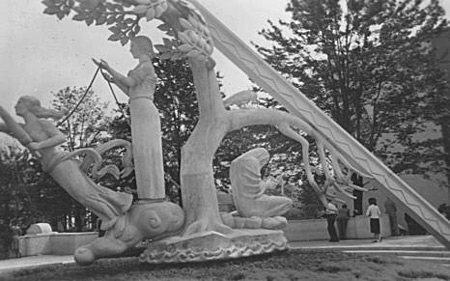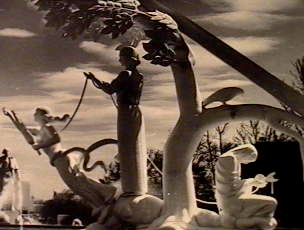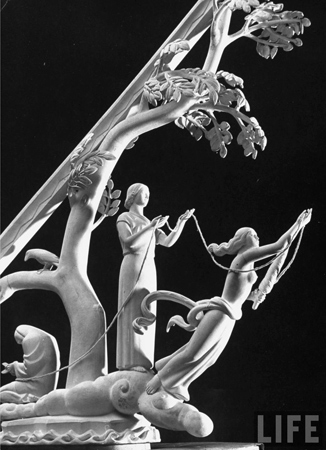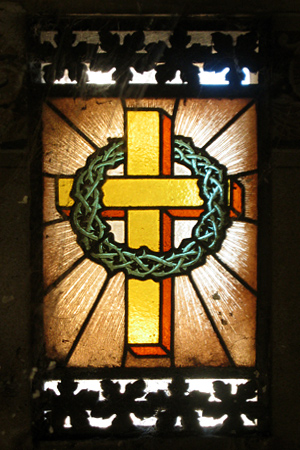
Documenting Recoleta Cemetery in Buenos Aires since 2007
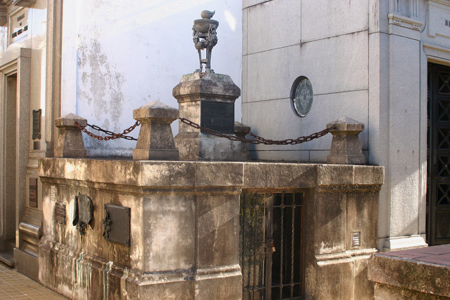
Online biographical information about this career soldier is unfortunately sparse, but after the independence wars Juan Estanislao del Campo allied with Lavalle against Rosas. Fighting in several battles, he was one of the few to accompany Lavalle on the flight through northern Argentina.
The son of Estanislao del Campo & his wife, Gregoria Luna, became a recognized gauchesco writer, most known for a hilarious farce titled “Fausto.” Coronel Estanislao del Campo passed away in 1861, & this tomb was declared a National Historic Monument in 1946.
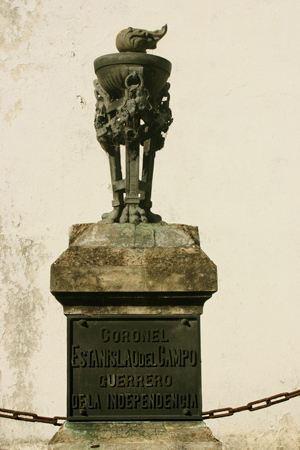
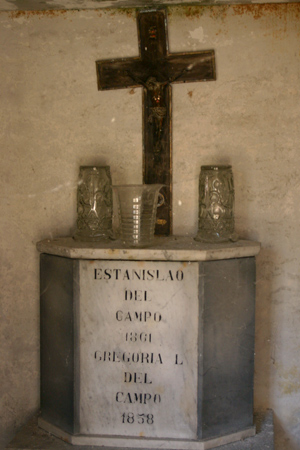
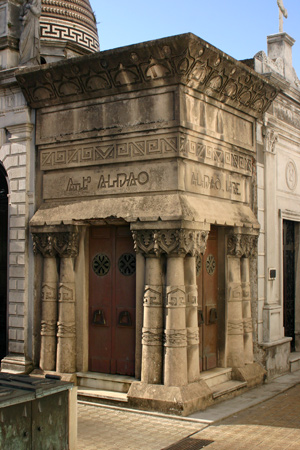
As part of an architectural & cultural movement from 1860 to 1900, nations once controlled by Spain began examining & re-evaluating their past. Dubbed Neoprehispánica, native imagery & patterns inspired the arts & was most popular in Mexico. Due in part to distance & also because Argentina had not preserved much of its pre-Hispanic past, the movement only caught on locally in the 1920s & 1930s. Its geometric designs fused well with Art Deco. Some of the architects to embrace Neoprehispánica in Buenos Aires were Ángel Guido, Martín Noel & Estanislao Pirovano.
The Aldao family mausoleum is unique in Recoleta Cemetery. While others with touches of this style exist, Atilo (Atilio or Antonio) Aldao made a bold statement:
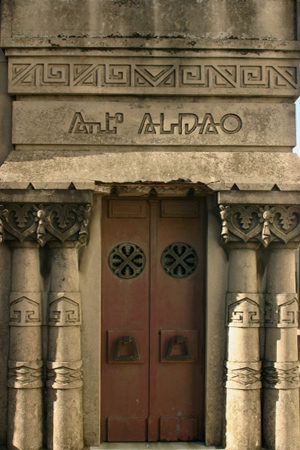
Other places to look for this style are on plaques dedicated during that era:
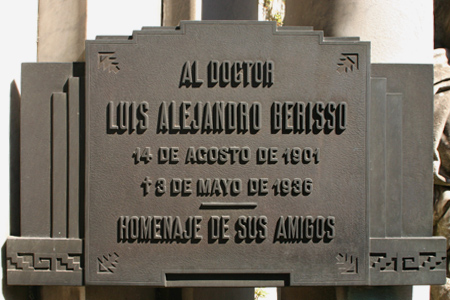

It’s difficult to believe that no other reference exists online regarding this image in cemeteries. Scissors can represent the profession of tailor or seamstress, but not in this case. The above image is found only on the front gate so the symbolism would be more general.
Another option might be a representation of The Fates, three sisters which several ancient cultures believed controlled all destiny. In the Greek version Clotho gathered material & spun the thread, Lachesis measured the thread, & Atropos cut the thread with her scissors… the end of a life. Standard depictions of Atropos show her scissors open, ready to cut the thread. The cemetery image has closed scissors paired with a knife. Big mystery.
My favorite version the sisters is “Time & Fates of Man” by American sculptor Paul Manship as part of an enormous sundial for the 1939 World’s Fair in New York City. He’s mainly known for the Prometheus Fountain in Rockefeller Center, but this was equally as impressive. The last photo is courtesy of the Life magazine archive hosted on Google:
